Gynecomastia Surgery
In Philadelphia And New Jersey
Men suffering from gynecomastia have varying severity of enlarged breasts or “man boobs”. Dr. Lo personalizes his surgical technique to your individual situation removing the “man boobs” to give you the best look possible.
Request A Consultation Before & AfterAdrian Lo, MD, FACS, FRCS (C), a leading Philadelphia gynecomastia surgeon, understands that having a normal looking, muscular chest is important to many men.
Did you know that?
- About 40 to 60 percent of men suffer from enlarged breast tissue, a condition known as gynecomastia, or sometimes referred to as “man boobs”.
- You can eat healthy, exercise regularly and still not get the chest profile that you want with the “man boobs” still remaining.
- There is no “magic pill” or medication that can get rid of your gynecomastia.
If this sounds familiar, you will benefit from gynecomastia plastic surgery with Dr. Lo.
Learn About Gynecomastia Surgery
- Gynecomastia means female breast in Greek and is used to described enlarged breasts in males.
- True gynecomastia is defined as an enlarged breast, or gland tissue. Many factors can play a role in the development of gynecomastia, such as hormone imbalance, genetics, medications, alcohol abuse and the use of steroids. Often, adolescents develop excess breast tissue during puberty that never goes away.
- Pseudogynecomastia is when men develop gynecomastia because of an increase in fat as opposed to gland tissue in the breast area. This can occur due to significant weight gain, weight fluctuations over time or hereditary factors.
Gynecomastia Surgery Before and After
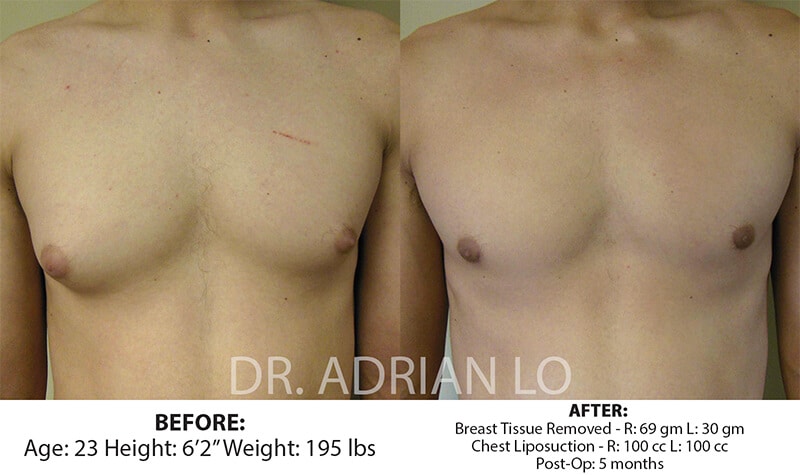
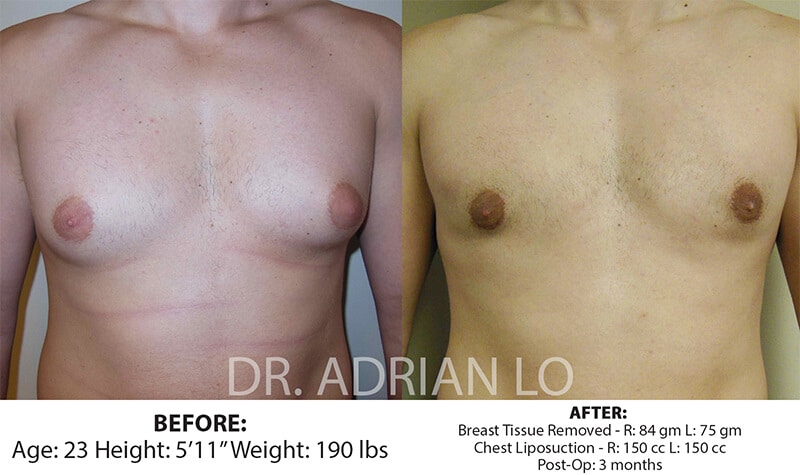
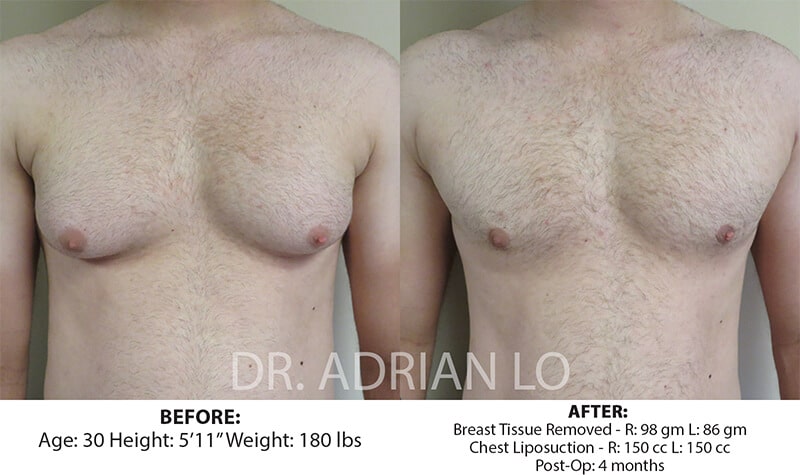
Join the thousands of men that Dr. Lo has treated for gynecomastia giving them a normal looking chest and making them feel better about their appearance.
See ResultsWhat Are The Advantages Of Gynecomastia Surgery?
Permanent removal of your gynecomastia or man boobs as conservative treatment with diet, exercise, medication and pills do not work.
Hidden scars around the nipple, areola and armpit that heal almost invisible.
Painless recovery requiring little or no pain medication.
Removes risk of breast cancer.
Am I A Candidate For Gynecomastia Surgery?
During your gynecomastia surgery consultation, Dr. Lo will evaluate your unique anatomy, aesthetic goals and develop a customized gynecomastia treatment plan that is best for you.
You May Be A Candidate For Gynecomastia Surgery If:
- You are not happy with the appearance of your chest caused by enlarged breasts or man boobs.
- You can feel firm gland tissue behind your nipple or areola.
- You have puffy nipples or areolas.
- Diet and exercise have not improved the appearance of your chest. Most often, diet and exercise do not help.
- You wish to improve the look of your chest.
You May Not Be A Candidate for Gynecomastia Surgery If:
- Most men are candidates for gynecomastia surgery. If you have severe health problems or medical conditions, then Dr. Lo may ask for a medical evaluation to be done to assess your suitability for gynecomastia surgery.
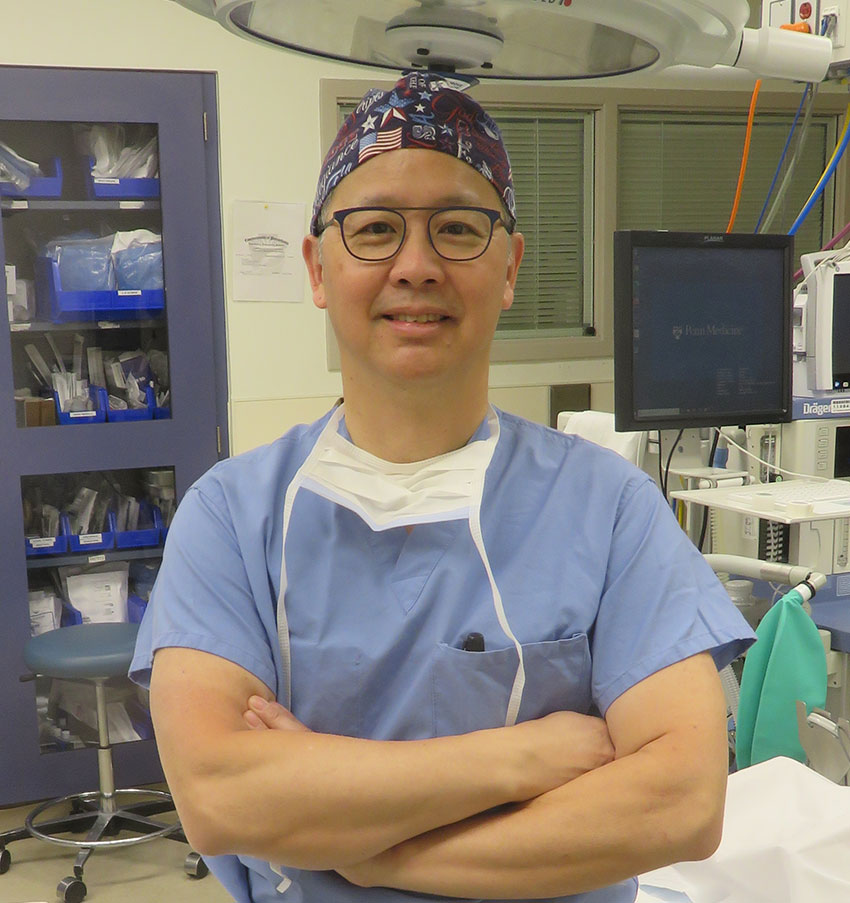
What Are The Surgical Options To Treat Gynecomastia?
Depending on the cause and complexity of your gynecomastia, Dr. Lo will use different gynecomastia surgical techniques for your surgery to give you a normal-looking masculine chest.
Advanced Liposuction For Gynecomastia
If your man boobs consist of mainly fat, then the following advanced liposuction techniques may be used to remove the fat through an armpit cut.
- Tumescent liposuction: Before performing liposuction, Dr. Lo injects tumescent fluid into the area to be treated. Tumescent fluid is a sterile solution made of saline (sterile saltwater solution), a local anesthetic called lidocaine and a vasoconstrictor called epinephrine. This solution is used to minimize bleeding, bruising, swelling and pain.
- Ultrasonic liposuction: This liposuction technique uses ultrasonic waves to “melt’ the fat before it is suctioned out. Dr. Lo will use this method to give you more extensive sculpting or contouring through the chest area.
- Power-assisted liposuction (PAL): Additionally, Dr. Lo uses power-assisted liposuction (PAL) which is another liposuction technique that uses an oscillating cannula to remove fibrous fat in the chest area to achieve maximum contouring of the chest region.
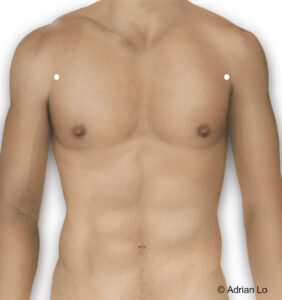
Advanced Liposuction For Gynecomastia
Subcutaneous Mastectomy For Gynecomastia
 If your man boobs consist of mainly glands, Dr. Lo will perform subcutaneous mastectomy which is the surgical procedure that removes gland tissue. Dr. Lo calls this “cutting out the glands”. With subcutaneous mastectomy, Dr. Lo makes a cut or incision in the lower part of the areola, the area around the nipple, through which he removes the gland tissue. The scar will be hidden in the edge of the pigmented areola and will be nearly invisible. If you have puffy nipples, this will also be corrected at this time. Additionally, advanced liposuction may also be performed with gland removal to shape and contour your chest to give the best look possible.
If your man boobs consist of mainly glands, Dr. Lo will perform subcutaneous mastectomy which is the surgical procedure that removes gland tissue. Dr. Lo calls this “cutting out the glands”. With subcutaneous mastectomy, Dr. Lo makes a cut or incision in the lower part of the areola, the area around the nipple, through which he removes the gland tissue. The scar will be hidden in the edge of the pigmented areola and will be nearly invisible. If you have puffy nipples, this will also be corrected at this time. Additionally, advanced liposuction may also be performed with gland removal to shape and contour your chest to give the best look possible.

Above image shows armpit incision used for liposuction and nipple/areolar incision used for gland removal.
Male Breast Reduction For Gynecomastia
If your man boobs are severe and they are a B, C or D cup breast size, Dr. Lo may recommend male breast reduction surgery. Male breast reduction procedure uses two incisions on each chest for your gynecomastia surgery. The procedure consists of a circumferential cut around the nipple/areola to make it smaller and reposition it higher on your chest in a more normal position. There will also be an incision or cut in the lower part of your chest from side to side in the inframammary crease. Through these incisions, the excess breast tissue and skin are removed allowing shaping and contouring of your chest.
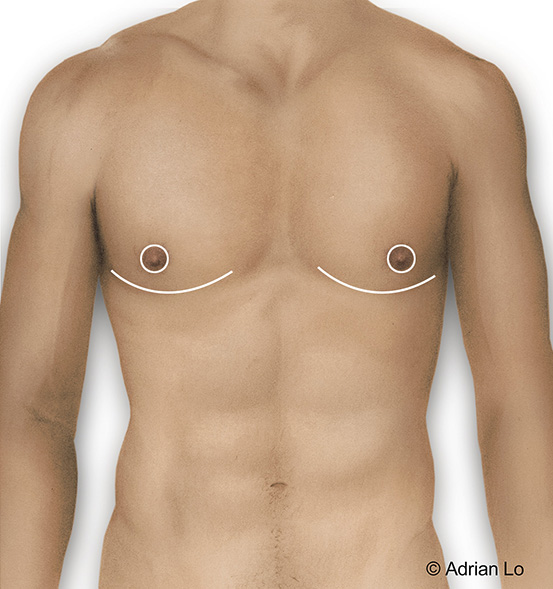
Above image shows incisions used for the male breast reduction procedure.
The Dr. Lo Advantage
No Pain Protocol for Gynecomastia Surgery: Dr. Lo has developed a multi-step plan to minimize your pain and discomfort promoting a fast recovery. Most of his gynecomastia patients take no pain medication after surgery or if needed, acetaminophen or an anti-inflammatory may be recommended.
Fast Recovery: Chest work outs can be resumed in 2 weeks as Dr. Lo encourages you to begin to shape the chest. There is no restriction on abdominal exercises and lower body workouts.
Gynecomastia Specialist: Dr. Adrian Lo is a board-certified top plastic surgeon with over 25 years of experience and has been recognized nationally for his gynecomastia surgery expertise.
Gynecomastia Surgery FAQs
-
There are four types of gynecomastia that are treated routinely by Dr. Lo:
- Adolescent gynecomastia occurs in adolescent males at puberty and the teenage years. During this time there is an imbalance of estrogen and testosterone hormones causing the glandular tissue to grow resulting in extra breast tissue. This breast tissue often feels hard and may be painful. Many boys have been told it will go away with time, but the reality is that it doesn’t. Dr. Lo treats many men in this situation, as early as age 13 and usually around age 18 to 30, when men realize that their gynecomastia is not going away. Only gynecomastia correction surgery will help give you a normal chest. Gynecomastia may also be hereditary and run in the male members of a family.
- Idiopathic gynecomastia is a term to describe excess breast tissue that develops without a known specific cause or reason. It is most likely a hormonal imbalance of estrogen and testosterone that stimulated breast gland growth. This is true glandular tissue that will not go away by itself and requires Dr. Lo to remove the breast tissue and gland during the gynecomastia correction surgery.
- Iatrogenic or Drug Induced gynecomastia is excess breast tissue caused by drugs such as anabolic steroids and other similar medications. This is true gland tissue that is permanent and requires breast gland removal during gynecomastia surgery.
- Pseudogynecomastia is enlarged breasts in males who may be overweight or at one time in their life been overweight. Despite exercise, dieting and losing some weight, the extra breast tissue, which is mainly fat, stubbornly remains. Dr. Lo has corrected thousands of men with this type of gynecomastia giving them a normal chest for the first time in their lives.
-
- If you have mainly fat as part of your man boobs, then advanced liposuction will successfully remove your gynecomastia or man boobs.
- If you have any firmer tissue or gland tissue, then this breast tissue or gland tissue will need to be removed through a cut around the nipple/areolar. This procedure is called subcutaneous mastectomy or cutting out the glands. Liposuction will not remove gland tissue.
- Majority of men will require breast gland removal and liposuction to achieve a normal looking masculine chest.
-
- Yes. If your gynecomastia consists of gland tissue, then it is extremely important and necessary that your gland be completely removed through a cut in the lower part of the nipple/areola.
- The gland will be sent to the pathology lab to be examined and tested and you will receive a copy of the lab report.
-
- Many men suffer from large nipples in addition to puffy nipples and gynecomastia or manboobs.
- The nipples are often too long and wide causing them to stick out in shirts and clothing leading to major concern and embarrassment.
- A nipple reduction procedure may be performed at the same time as the gynecomastia surgery procedure or as a separate procedure under local anesthesia in the office.
- The incision or scar is almost invisible and sensation is usually preserved.
- Surgery time is 30 minutes and complete healing in 2 weeks.
-
- After gynecomastia surgery with Dr. Lo, the breast tissue that was hiding your chest muscle is now gone. You can now focus on strength-building exercises that target your chest area to get a more muscular chest appearance. You will be able to define the lower border of your pectoral muscle and the serratus muscle.
WANT TO LEARN MORE
ABOUT DR. LO AND HIS PRACTICE?
Contact Us
Schedule A ConsultationLocations
Philadelphia Cosmetic Surgery
301 South 8th Street, Suite 3H,
Philadelphia PA 19106
New Jersey Cosmetic Surgery
990 Route 73 North
Marlton, NJ 08053
Social Media
